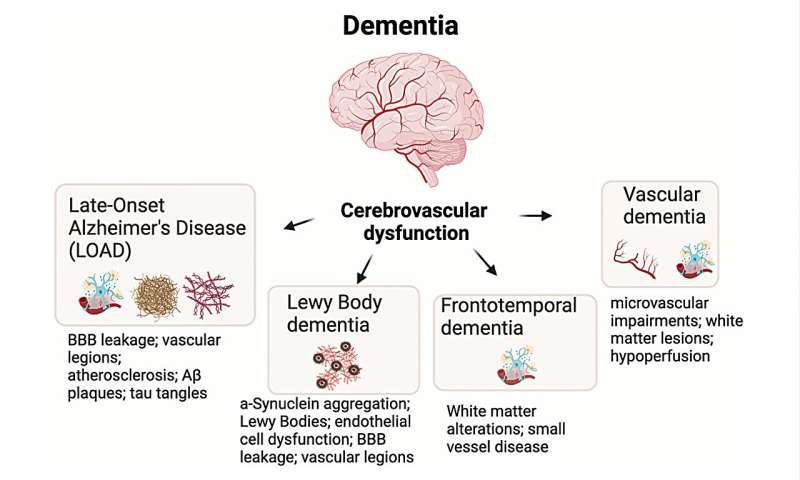This article has been reviewed according to Science X's editorial process and policies. Editors have highlighted the following attributes while ensuring the content's credibility:
fact-checked
proofread
Researchers investigate the aging brain and peripheral vascular dysfunction

A new review paper was published in Aging titled "Peripheral vascular dysfunction and the aging brain."
Aging is the greatest non-modifiable risk factor for most diseases, including cardiovascular diseases (CVD), which remain the leading cause of mortality worldwide. In their new review, researchers Devin Wahl and Zachary S. Clayton from Colorado State University and the University of Colorado note that robust evidence indicates that CVD are a strong determinant for reduced brain health and all-cause dementia with advancing age.
The researchers say, "CVD are also closely linked with peripheral and cerebral vascular dysfunction, common contributors to the development and progression of all types of dementia, that are largely driven by excessive levels of oxidative stress (e.g., reactive oxygen species [ROS])."
Emerging evidence suggests that several fundamental aging mechanisms (e.g., "hallmarks" of aging), including chronic low-grade inflammation, mitochondrial dysfunction, cellular senescence and deregulated nutrient sensing contribute to excessive ROS production and are common to both peripheral and cerebral vascular dysfunction.
Therefore, targeting these mechanisms to reduce ROS-related oxidative stress and improve peripheral and/or cerebral vascular function may be a promising strategy to reduce dementia risk with aging. Investigating how certain lifestyle strategies (e.g., aerobic exercise and diet modulation) and/or select pharmacological agents (natural and synthetic) intersect with aging "hallmarks" to promote peripheral and/or cerebral vascular health represent a viable option for reducing dementia risk with aging.
The authors add, "Therefore, the primary purpose of this review is to explore mechanistic links among peripheral vascular dysfunction, cerebral vascular dysfunction, and reduced brain health with aging. Such insight and assessments of non-invasive measures of peripheral and cerebral vascular health with aging might provide a new approach for assessing dementia risk in older adults."
More information: Devin Wahl et al, Peripheral vascular dysfunction and the aging brain, Aging (2024). DOI: 10.18632/aging.205877





















